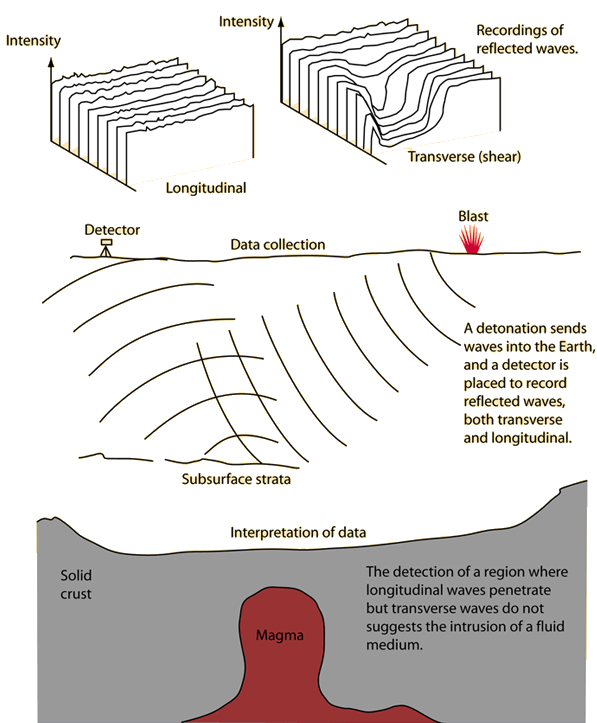Longitudinal waves can propagate through either solid or fluid media, but transverse or "shear" waves cannot propagate in a fluid.
Source: http://hyperphysics.phy-astr.gsu.edu/hbase/sound/mamlak.html#c1
what?
Longitudinal waves can propagate through either solid or fluid media, but transverse or "shear" waves cannot propagate in a fluid.
Transverse waves can (and do) occur at the surface of a body of water due to surface tension, but they can't exist anywhere else in the body of water.
Transverse waves can (and do) occur at the surface of a body of water due to surface tension, but they can't exist anywhere else in the body of water.
Johnnydrama is right (Dude, who are you? And how are you so smart?!)
The same site, does mention that a ripple pond is an example of transverse wave but that occurs at the surface of body of water.
But could you please explain how/why transverse waves do not propagate through fluid? I understand that longitudinal waves do partly from personal experience (e.g. you can hear sound under water in a swimming people)
HUH?! What about refraction through a water surface?
Johnnydrama is right (Dude, who are you? And how are you so smart?!)
The same site, does mention that a ripple pond is an example of transverse wave but that occurs at the surface of body of water.
But could you please explain how/why transverse waves do not propagate through fluid? I understand that longitudinal waves do partly from personal experience (e.g. you can hear sound under water in a swimming people)
You need to have tension to transmit a transverse wave, there's no tension between particles in a fluid or gas unless you're on an interface.
You need to have tension to transmit a transverse wave, there's no tension between particles in a fluid or gas unless you're on an interface.
Light passes through many things, but it's a vibration in the fabric of spacetime, not of the random material it's passing through.
Ah, yes is this why speed = sqrt (restoring force/ resistance) ? This is crazy.
Light passes through many things, but it's a vibration in the fabric of spacetime, not of the random material it's passing through. 😱
So transverse waves & longitudinal waves: travel through gases
transverse waves : only solids & gases
longitudinal waves: fluid, solids & gases
...So what do we do for the MCAT if it asks about light transmittence through a fluid?

